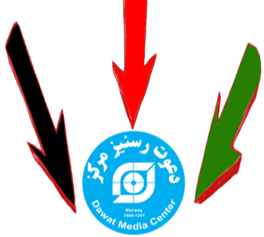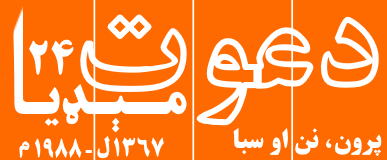In the intricate web of Afghan politics and social dynamics, the Taliban 2.0 public relations (PR) campaigns have become a focal point of their governance strategy. Analyzing the PR efforts surrounding the Qosh Tapa canal irrigation project offers a window into how the Taliban navigates and counters opposition narratives in the digital age.
The Controversy: Allegations of Ethnic Engineering
The Qosh Tapa canal, a major irrigation project aimed at channeling water from the Amu River to arid regions in northern Afghanistan, became a lightning rod for controversy. Critics and online opposition groups widely accused the Taliban of using the canal project as a covert means to relocate Pakistani Pashtuns into predominantly non-Pashtun areas, thereby altering the region’s ethnic composition. This narrative played into deep-seated fears of ethnic marginalization and demographic manipulation, resonating particularly among Uzbek, Turkmen, and Tajik communities in the north.
The Taliban’s Counter-Narrative
In response to these allegations, the Taliban launched a comprehensive PR campaign to refute the claims and reshape public perception. Their strategy was multifaceted, leveraging various media platforms to present a cohesive counter-narrative.
- Local Farmer Testimonials: The Taliban produced and disseminated numerous reports featuring not only Uzbek and Turkmen farmers working around the canal but also dispatching Turkmen and Uzbek-speaking reporters. These reports highlighted the tangible benefits the project brought to local agriculture, including increased crop yields and improved livelihoods. By showcasing real-life beneficiaries from ethnic groups purportedly at risk of displacement, the Taliban aimed to dismantle the narrative of ethnic engineering.
- Social Media Engagement: Recognizing the power of social media in shaping public opinion, the Taliban mobilized pro-government influencers and content creators on platforms like YouTube and Twitter. These influencers produced videos and posts documenting the positive impact of the canal on local communities, often featuring interviews with local residents who praised the project.
- Visual Evidence: High-quality videos and photographs were circulated to visually affirm the presence and benefits for Uzbek and Turkmen farmers. These visuals served as a powerful tool to counteract the abstract and fear-based allegations with concrete evidence of multi-ethnic collaboration and prosperity.
- Strategic Messaging: The Taliban’s messaging emphasized themes of national unity and development. By framing the canal project as a national initiative designed to benefit all Afghans, regardless of ethnic background, the Taliban sought to transcend ethnic divisions and position themselves as the guardians of national interest and development.
Effectiveness of the PR Campaign
The Taliban’s PR efforts were met with varying degrees of success. On one hand, their proactive engagement and use of local testimonials managed to garner support among some segments of the population, particularly those directly benefiting from the canal project. The visual and anecdotal evidence provided a compelling counter-narrative that was difficult to dismiss outright.
However, the underlying ethnic tensions and historical mistrust among Afghanistan’s diverse communities have always been susceptible to manipulation by opposition within and outside Afghanistan. While the PR campaign may have alleviated some immediate concerns, the long-term effectiveness in altering deeply entrenched perceptions remains uncertain.
Broader Implications
The Taliban’s handling of the Qosh Tapa canal controversy highlights several key aspects of their governance and communication strategy:
- Adaptability to Modern Media: The Taliban’s adept use of social media and digital platforms indicates a significant evolution from their previous media strategies. They are increasingly aware of the importance of winning hearts and minds in the digital age.
- Emphasis on Development Projects: By focusing on infrastructure and development projects, the Taliban aims to demonstrate their capability to govern and bring tangible benefits to the populace. This approach seeks to legitimize their rule domestically and internationally.
- Challenges of Ethnic Integration: The persistent ethnic tensions underscore the complexities of governing a multi-ethnic nation. The Taliban’s success in managing these tensions will be a crucial determinant of their long-term stability and legitimacy.
Conclusion
The Qosh Tapa canal case study illustrates the Taliban’s nuanced approach to public relations in the face of opposition narratives. While their efforts to portray the project as a unifying and beneficial endeavor achieved some success, the underlying ethnic divisions pose ongoing challenges. The Taliban’s ability to navigate these challenges will be crucial as they continue to consolidate power and seek broader acceptance both within Afghanistan and on the international stage.

د دعوت رسنیز مرکز ملاتړ وکړئ
له موږ سره د مرستې همدا وخت دی. هره مرسته، که لږه وي یا ډیره، زموږ رسنیز کارونه او هڅې پیاوړی کوي، زموږ راتلونکی ساتي او زموږ د لا ښه خدمت زمینه برابروي. د دعوت رسنیز مرکز سره د لږ تر لږه $/10 ډالر یا په ډیرې مرستې کولو ملاتړ وکړئ. دا ستاسو یوازې یوه دقیقه وخت نیسي. او هم کولی شئ هره میاشت له موږ سره منظمه مرسته وکړئ. مننه
د دعوت بانکي پتهDNB Bank AC # 0530 2294668 :
له ناروې بهر د نړیوالو تادیاتو حساب: NO15 0530 2294 668
د ویپس شمېره Vipps: #557320 :
Support Dawat Media Center
If there were ever a time to join us, it is now. Every contribution, however big or small, powers our journalism and sustains our future. Support the Dawat Media Center from as little as $/€10 – it only takes a minute. If you can, please consider supporting us with a regular amount each month. Thank you
DNB Bank AC # 0530 2294668
Account for international payments: NO15 0530 2294 668
Vipps: #557320


Comments are closed.